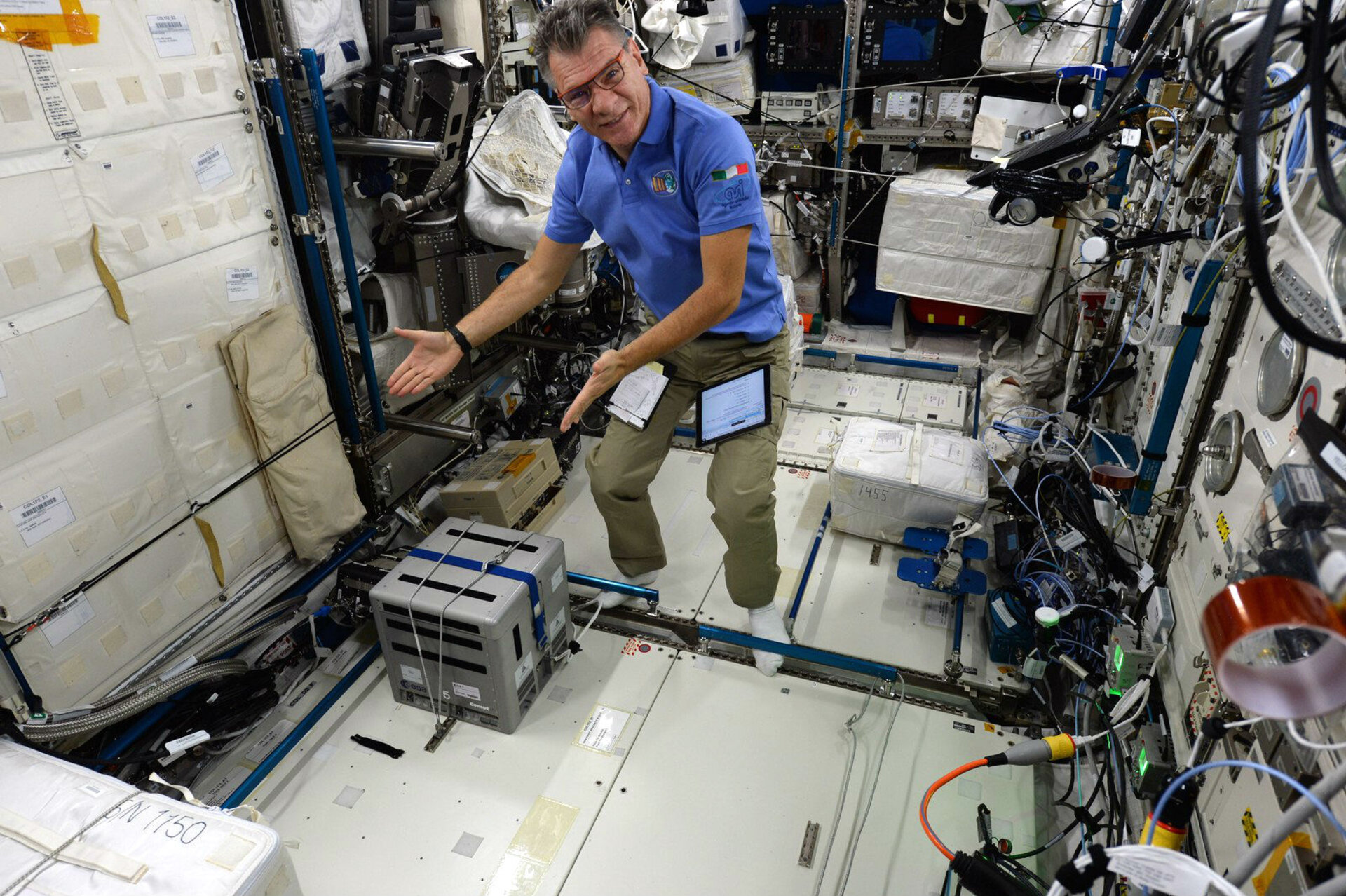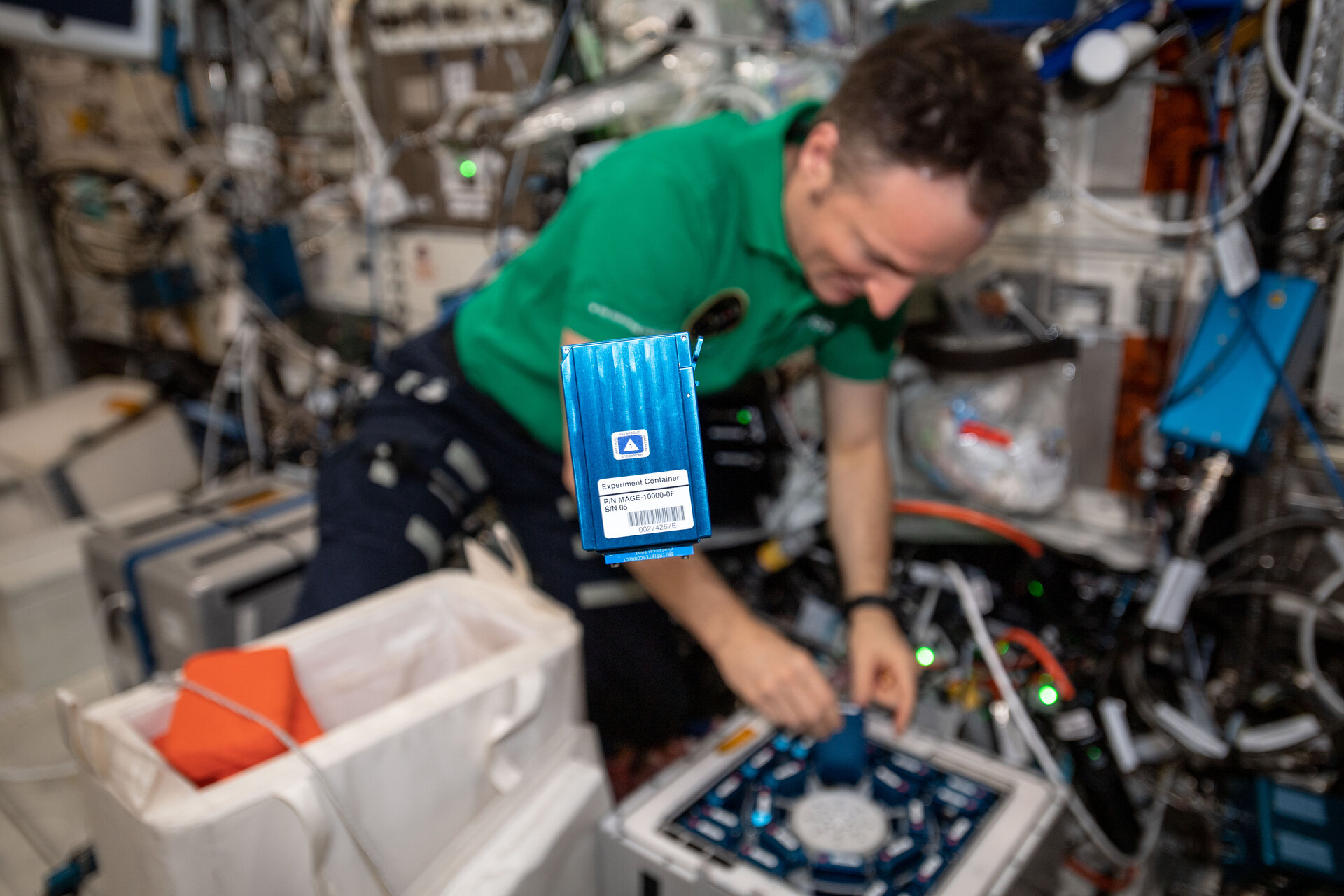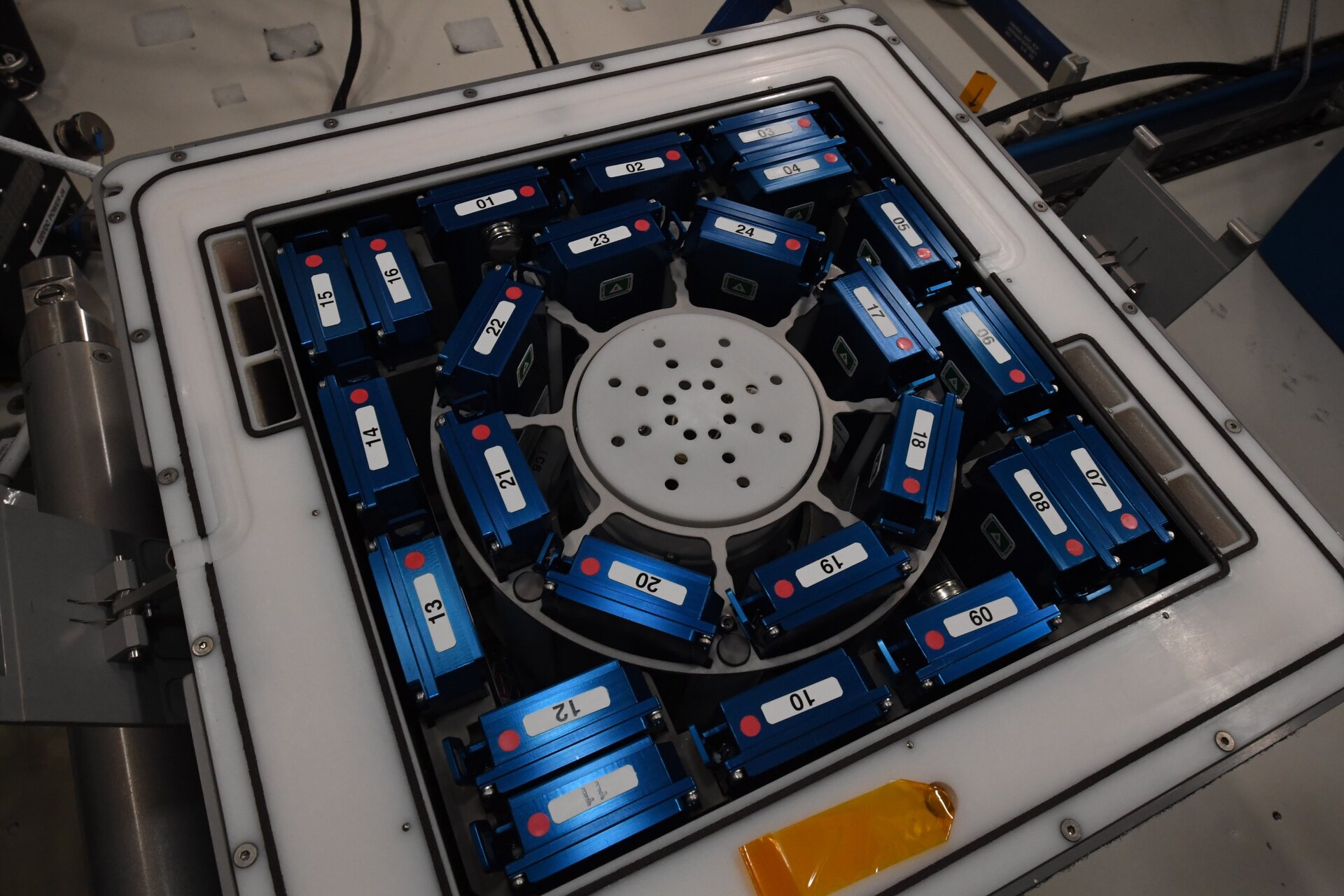Celebrating 20 years of KUBIK: a cornerstone of life science research in space
On 19 April 2025, ESA marks the 21st anniversary of KUBIK, an incubator for biological samples in space. This versatile and enduring facility has advanced our understanding of biology in space for the last two decades.
The anniversary event, held on 16-17 April 2025 at ESA’s technical heart ESTEC in Noordwijk, Netherlands, was a resounding success, bringing together keynote speakers, science teams, industrial partners and ESA colleagues to celebrate two decades of achievement. This event highlighted the growing importance of commercial experimentation and the exciting future of space exploration.
KUBIK began its journey on 19 April 2004, launched aboard ESA astronaut André Kuipers’ Delta mission. The first two space incubators quickly proved their worth aboard the International Space Station, laying the foundation for what would become one of the most productive and reliable research facilities in orbit.

Over the past 21 years, seven different KUBIK units have flown to the Space Station, supporting more than 60 biological experiments spanning human and animal cells, bacteria, plants, and small animals, such as nematodes and Xenopus frogs.
Designed for low-cost, autonomous operation and regularly upgraded for enhanced performance, KUBIK has remained almost constantly active on the Station. In 2010, two KUBIKs were permanently installed in ESA’s Columbus module, where they have remained on duty ever since.
“Today, we celebrate a remarkable milestone – the 20th anniversary of KUBIK. Since its launch in 2004, KUBIK has exceeded expectations, thriving as a cornerstone of scientific research aboard the International Space Station”, says Daniel Neuenschwander, ESA Director of Human and Robotic Exploration. “Its success reflects the excellence of our industrial partners, Comat Space (France) and Kayser Italia (Italy), and the spirit of international collaboration that extends beyond ESA’s Member States. This achievement is also a tribute to the versatility and dedication of the science teams who have delivered groundbreaking results.”
Small in size, big in impact
KUBIK is a compact, self-contained incubator system that provides controlled temperature and gravity conditions for biological samples in space. Its built-in centrifuge allows researchers to simulate different gravity levels – from weightlessness to Earth or Mars gravity – enabling direct comparisons within the same experiment. Its flexible, modular design has allowed it to evolve with scientific needs and integrate easily across Station modules and logistics vehicles.

Through its extensive use, KUBIK has enabled research into human health, regenerative medicine, microbiology, space farming and more. Many experiments conducted with KUBIK contribute directly to understanding how living systems adapt to space – insights that are critical for long-duration missions and benefit life on Earth.
Over the years, hardware developed for KUBIK has evolved to meet a variety of experimental needs. All units, whether simple or complex, are built to high standards, and many have been used in multiple missions. This has resulted in a flexible set of equipment that can support different experiments with similar requirements.
“KUBIK has allowed us to conduct experiments with minimal crew involvement, running autonomously on a pre-programmed timeline. This has made it one of the most efficient facilities aboard the Space Station,” says Jutta Krause, Payload Development Team Lead.
A platform for the future
KUBIK’s success is grounded in close collaboration between ESA, its industrial partners and an international science community. As we set our sights on the Moon and Mars, KUBIK remains a vital platform – delivering science today and shaping the missions of tomorrow.
“This anniversary marks 20 years of learning, improving and evolving – driven by dedicated teams working together to achieve the best results for science. KUBIK exemplifies ESA’s commitment to excellence and innovation in human and robotic exploration,” concludes Jutta.















 Germany
Germany
 Austria
Austria
 Belgium
Belgium
 Denmark
Denmark
 Spain
Spain
 Estonia
Estonia
 Finland
Finland
 France
France
 Greece
Greece
 Hungary
Hungary
 Ireland
Ireland
 Italy
Italy
 Luxembourg
Luxembourg
 Norway
Norway
 The Netherlands
The Netherlands
 Poland
Poland
 Portugal
Portugal
 Czechia
Czechia
 Romania
Romania
 United Kingdom
United Kingdom
 Slovenia
Slovenia
 Sweden
Sweden
 Switzerland
Switzerland

































